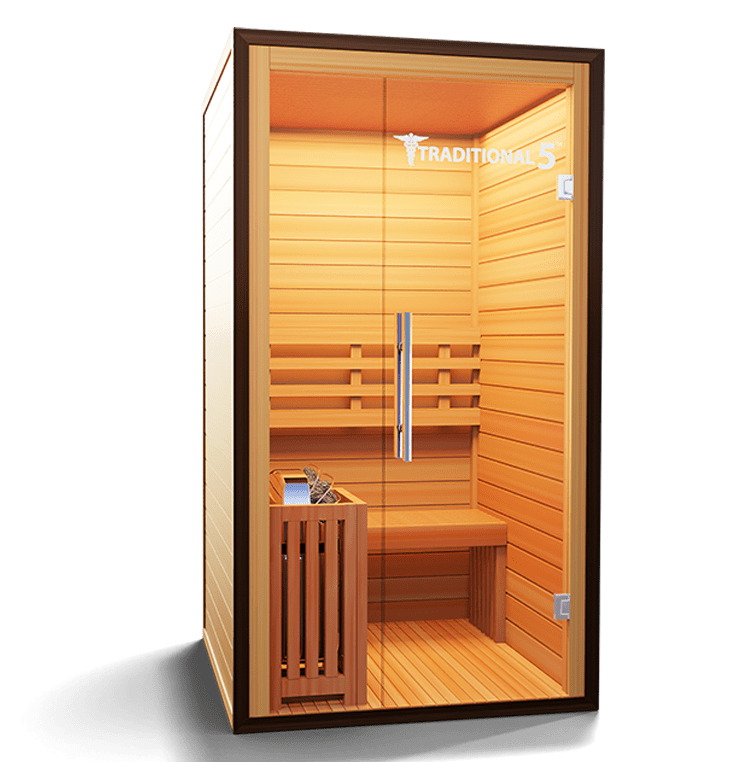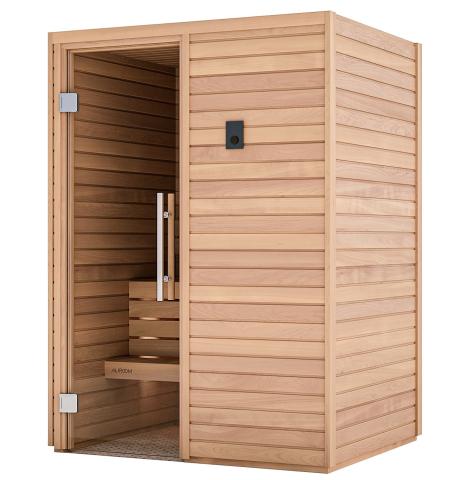The Main Principles Of Traditional Sauna
The Main Principles Of Traditional Sauna
Blog Article
The Single Strategy To Use For Traditional Sauna
Table of ContentsTraditional Sauna Fundamentals ExplainedThe 30-Second Trick For Traditional SaunaThe 20-Second Trick For Traditional SaunaThe Facts About Traditional Sauna Uncovered
A lot of the weight lost in a sauna is water loss and is re-gained upon rehydrating. Nevertheless, undoubtedly sauna can be a vital part of a healthy and balanced weight loss program. To look at the differences in between standard and IR saunas, I will separate these into proven, academic, and produced differences.Thus, the hottest factor in the saunawhich goes to the ceiling straight over the sauna heateris commonly in between 185 and 190 F. Traditional Sauna. Claims that a traditional sauna surpasses 200 F is just not true and not applicable for electrical saunas sold in the US. The temperature level for a far-infrared sauna is usually established between 120 and 140 F; nevertheless, unlike the traditional sauna, the objective in and IR space is not to accomplish a heat
As a result of this, the temperature difference is virtually unnecessary, since excessive sweating leads to both sauna kinds, however the approach of warming the body is different. In an IR sauna the bather will certainly feel warm and will certainly sweat profusely, yet at much reduced temperature levels. Therefore, if the goal is to invest longer amount of times in the sauna, the IR sauna is a great choice.

Traditional Sauna Things To Know Before You Buy
When the high temperature level is accomplished, the aspects cycle on and off to maintain the heat. Many standard sauna customers delight in putting water over the rocks to produce heavy steam to increase sauna humidity degrees. The advantages of pouring water over the rocks include: making the space a lot more comfy, dampening the nasal flows, and permitting the use of aromatherapy by blending essential oils with the water.
In a far-infrared sauna, the heat waves pass through the body to effectively heat the body and raise the body core temperature. To achieve this raised temperature, Far-infrared emitters develop infrared power which is close to the very same wavelength as that which the body normally emitsoften described as the "Essential Array" of 7 to 14 microns), so the power is well gotten by the body.
When the energy gets in the body, it triggers the body temperature to enhance and ultimately leads to sweating. Learn More In an infrared sauna it is essential for the emitters/heaters to stay on practically continuously. Considering that there is no mass of rocks to preserve heat, the sauna will cool down if the emitters turned off.
As stated above, the sauna bather in an infrared room intends to place himself in front of running emitters to get optimal advantage from the warm. The heating time for both rooms can be extremely different, depending upon how the areas are made use of. For a typical sauna, a bather needs to enable 30-40 minutes for the area to attain a preferred temperature and to properly pre-heat the rocks.
Traditional Sauna Fundamentals Explained
A well constructed sauna will normally attain a temperature level of 150-160 F in concerning 30-40 minutes. For hotter temperatures, the space may need to warmth for a longer period.
To some, 15 mins was "lost" while the infrared energy heated the wood panels as opposed to heating a body, while others discover a pre-heated area to be more comfortable and believe a raised starting temperature is required to begin perspiring. The size of advised usage for each and every area is about the same (10-15 minutes per session); however, due to the lower air temperature levels and the ability to feel the effects of infrared heat faster than a traditional sauna, it is not uncommon for an individual to invest a total of 20-30 mins in an infrared sauna.
Traditional saunas often tend to be bigger (for this post this reason use even more electrical energy) than infrared saunas, although conventional saunas are certainly available in one and 2 individual sizes. For a two-person conventional sauna, 5x6 or 5x7 size is most preferred. The top bench can conveniently seat 2 or three individuals and is likewise long enough to rest throughout the sauna session.


The average price per kWH of electrical power in the united state is approximately $0.11, so a 4.5 kW heating unit will cost approximately $.50 to compete one hour, if the heater runs continually for one hour. Normally a sauna heater will run for 75% of the very first hour and 50% of succeeding hours on because the aspects cycle once the set temperature level is attained.
Traditional Sauna Can Be Fun For Anyone
A 2 individual far-infrared space is typically literally smaller sized than a traditional sauna, commonly concerning 4' x 4' or smaller. The IR heater is typically 1.5-1.7 kW utilizing a 120 volt 15 amp plug-in service. Considering that the space can be made use of quicker than a sauna space, we will certainly presume the space is used for to of an hour including warm up time.
Finally, there is a rarely talked about distinction in the social experience in More Help between both spaces. While our society has lost some of the social benefit of the typical sauna experience, it can be really socially gratifying. From household time in the sauna, to heart-felt conversations with better halves, to sauna partiesthe traditional sauna experience can lead to intimate socializing.
A lot of higher end infrared areas consist of colored light treatment, noise systems and full-glass fronts.
Report this page